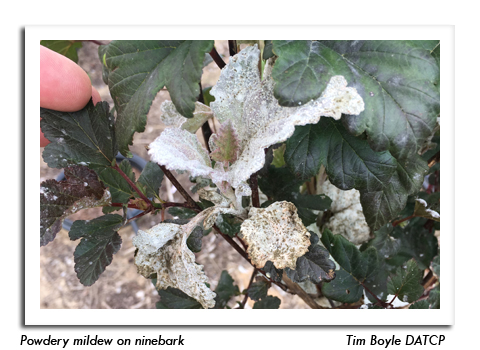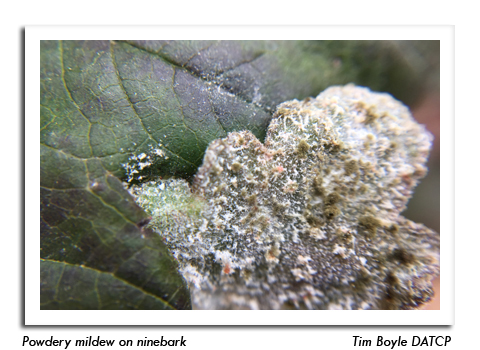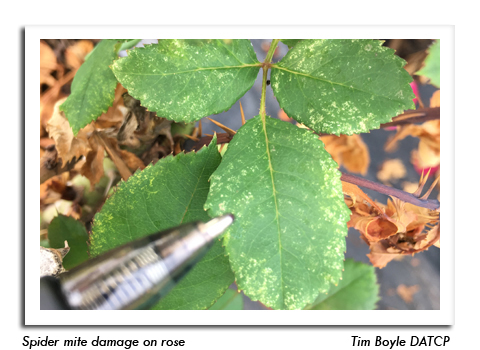
 |
|
|
Nursery & Forest
Volume 63 Number 16 Date 08/23/2018 POWDERY MILDEW - This fungal disease has been especially prevalent on Wisconsin nursery stock this season, with the extreme heat and humidity cycles being a major causal factor. Powdery mildew occurs on the upper and (less frequently) lower surfaces of leaves, as well as the stems, giving plants a white, powdery appearance. Caused by several closely-related, primarily host-specific fungi that survive in plant debris or on infected plants, powdery mildew is usually cosmetic and non-lethal for many trees and shrubs. However, on plants such as ninebark, powdery mildew can result in severe leaf loss and branch tip dieback. Fungicides containing dinocap, dithiocarbamates, myclobutanil, triadimefon, triforine, sulfur or thiophanate methyl are registered for use against powdery mildew. A combination of baking soda (1 ½ tablespoons) and light weight horticultural oil (e.g., Sunpray®) (3 tablespoons) in water (1 gallon) has also been shown to be effective. Most products should be applied every seven to 14 days from bud break until humid weather subsides. Be sure to read and follow all label instructions of the selected fungicide to ensure that you use the fungicide in the safest and most effective manner possible. Test-treating a small number of leaves or plants before treating a larger area is a best practice. JAPANESE BEETLE - Japanese beetle feeding and mating activity continues to be high on fruit trees, lindens, and ornamental plants at nursery growers in central and southern Wisconsin. Control of adult beetles is difficult. Insecticides may reduce beetle numbers and damage, but applications often need to be repeated every 3-4 days since new migrations of beetles can occur daily. Physically removing beetles or protecting valuable plants with floating row covers is the recommended control measure for small areas. Dropping the beetles into a container of soapy water will eliminate the aggregation pheromone released to attract more beetles. SPIDER MITES - Nursery inspectors report considerable spider mite damage at several central Wisconsin growing locations, on a variety of plants such as daylily, rose, and other ornamentals and trees. Spider mite damage appears as stippling or speckling on leaves and may also include a fine webbing on the plant. Heavily infested plants turn completely yellow and stop growing. Although spider mites are difficult to observe without magnification, they can be detected by gently shaking infested foliage over a sheet of paper where they can be more easily seen against the white background. Control options include using a stream of water to dislodge the mites from the plant, use of insecticidal oil or soap, employing natural predators including ladybugs, minute pirate bugs, predatory thrips or predatory mites, or a miticide application. Since spider mites thrive in dusty conditions, rinsing tree branches and keeping bare patches of ground lightly moist to reduce flying dust can help with control on tree farms and in orchards. -- Tim Boyle, DATCP Nursery Inspector 



|
|
|